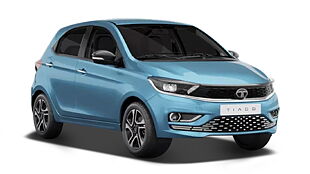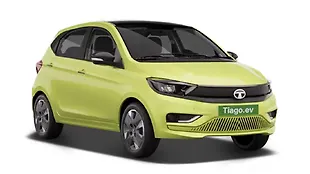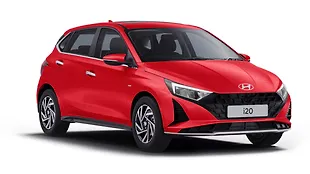Introduction

The world of premium hatches in India has entered a new phase. Never has there been a time when its major players have all got facelifts within two months of each other, that is, until 2014. The facelifted Volkswagen Polo was launched for the Indian market on July 15 while the Punto Evo was launched on August 5. These two will be joined by the all-new Hyundai Elite i20 which will be launched today. Each has upped the game and brought a new weapon in its arsenal, we find out what sets these cars apart from each other in another edition of CarWale comparison.
Exterior

Evolution seems to be the key and that is the path that all the three manufacturers have treaded on. The Fiat Punto Evo and VW polo get a new fasica and rear end (specific to India) while Elite gets a major change but retains the same overall design. It appears that Elite i20 is less of a leap than the Grand i10 when it comes to the i20 and the i10 as the former had already got a fluidic update in the last three years.

The fascia of the Fiat Punto Evo is rounded, thanks to its Italian roots but look very elegant nonetheless. The Polo in a typical German way is all business like but includes a certain amount subtle chrome to give it a premium appeal. The Elite i20’s fascia’s has sporty overtones thanks to the sharp lines on the bumper and split bumper design.

The side profile of two out of the three cars is the same as their previous models. The Punto Evo has the same forward leaning stance while the Polo has retained the stance from the 2012 model. Both cars have also retained their massively flared wheel arches giving them a squat stance with this being more prominent in the Punto Evo.

The Elite i20 loses out on some of the flare in the wheel arches but gets a blacked out C-pillar which gives the impression of a floating roofline. However, the stance is the same but thanks to the raised ground clearance and 195/55 R16 alloy wheels, the car appears to be much bigger.

At the rear, the Fiat Punto Evo gets a new design for the tail lamps as well as new bumper design. The VW Polo retains a majority of the elements in the rear but gets a new bumper in which there is a new design for the number plate holder.

Hyundai has reworked the tail lamps to make them wraparound units on the Elite i20. There are minor modifications to the bumper which now sees the reflector strips move from the top of the bumper to the bottom. The floating roofline has further been enhanced thanks to the blacked out C-Pillar.
Interior

All the three cars are very similar in terms of features with climate control, 2-DIN music system (BT+ USB+AUX), and steering mounted audio controls being standard across all three cars. What sets them apart are the additional options which in this case are rear AC vents (Punto Evo and Elite i20), telescope adjustment for the steering (Polo and Elite i20), two 12V power outlets (Elite i20), chilled glovebox (Elite i20), rear parking camera (Elite i20) and 1-GB internal memory (Elite i20). The list is exhaustive and it seems that Hyundai has put its best foot forward when it comes to the interiors.

Hyundai has always been known for its feature-rich vehicles, a reputation it demonstrated with the outgoing i20 as well as the Grand i10 when it was launched in October last year. This car seems to be no less and has raised the stakes in the B+ segment.

In terms of overall design, the Elite i20’s cabin is very similar to that of the Grand i10 while the Polo’s cabin remains mostly unchanged from the previous model sans some minor modifications. The Fiat Punto Evo gets exactly the same interiors and feature list as the Linea sedan. Hyundai and Fiat have gone with the two tone design with beige being the prominent colour. However, the Punto Evo Sport gets all black interiors.
Engine and Gearbox

First the petrol engines- The Polo gets a 1.2-litre mill that produces 74bhp/110bhp. The Punto is offered with two petrol engines- a 1.2-litre mill that produces 67bhp/96Nm as well as a 1.4-litre unit that produces 89bp/115Nm. Hyundai will offer the Elite i20 with a 1.2-litre petrol mill that produces 83bhp/113Nm.

All the four engines have been mated to a five-speed manual gearbox. Hyundai was the only one to offer an AT and this was mated to a 1.4-litre petrol engine but that appears to have been discontinued for the Elite i20. However, we believe that like the Grand i10, the Elite i20 too will get an AT and this will be launched at a later date.

The diesels- The Polo gets a new 1.5-litre diesel engine that produces 89bhp/230Nm while the Punto Evo has been mated to the 1.3-litre Multijet engine which is offered in two states of tune- 75bhp/197Nm and 90bhp/209Nm. The Elite i20 diesel is being offered with a 1.4-litre four pot motor that produces 89bhp.219Nm. Only the Elite gets a six-speed manual gearbox while the others are offered with a five-speed manual.
Verdict

The Hyundai i20 has been the segment leader for quite a while now and it looks like the Elite i20 will fare just as good. The new car is expected to priced Rs 40,000 more than the current model and so it almost seems certain that Elite i20 will take a little time to achieve the numbers its predecessor managed to garner. However, this is also the first time that all the major players in a part of a segment have all been facelifted/revised at the same time, so it will take a while to see who will emerge on top of the hierarchy.

![Hyundai Elite i20 [2014-2015] Image Hyundai Elite i20 [2014-2015] Image](https://imgd.aeplcdn.com/272x153/cw/cars/hyundai/elite-i20.jpg?q=80)
![Hyundai Elite i20 [2014-2015] Right Front Three Quarter Hyundai Elite i20 [2014-2015] Right Front Three Quarter](https://imgd.aeplcdn.com/199x112/ec/C0/7D/13902/img/m/Hyundai-Elite-i20-Right-Front-Three-Quarter-48832_ol.jpg?v=201711021421&q=80)
![Hyundai Elite i20 [2014-2015] Right Rear Three Quarter Hyundai Elite i20 [2014-2015] Right Rear Three Quarter](https://imgd.aeplcdn.com/199x112/ec/C0/7D/13902/img/orig/Hyundai-Elite-i20-Right-Rear-Three-Quarter-29680.jpg?v=201711021421&q=80)
![Hyundai Elite i20 [2014-2015] Rear View Hyundai Elite i20 [2014-2015] Rear View](https://imgd.aeplcdn.com/199x112/ec/C0/7D/13902/img/orig/Hyundai-Elite-i20-Rear-view-29682.jpg?v=201711021421&q=80)
![Hyundai Elite i20 [2014-2015] Dashboard Hyundai Elite i20 [2014-2015] Dashboard](https://imgd.aeplcdn.com/199x112/ec/C0/7D/13902/img/orig/Hyundai-Elite-i20-Dashboard-29685.jpg?v=201711021421&q=80)
![Hyundai Elite i20 [2014-2015] Interior Hyundai Elite i20 [2014-2015] Interior](https://imgd.aeplcdn.com/468x263/ec/C0/7D/13902/img/orig/Hyundai-Elite-i20-Interior-29677.jpg?v=201711021421&q=80)

























